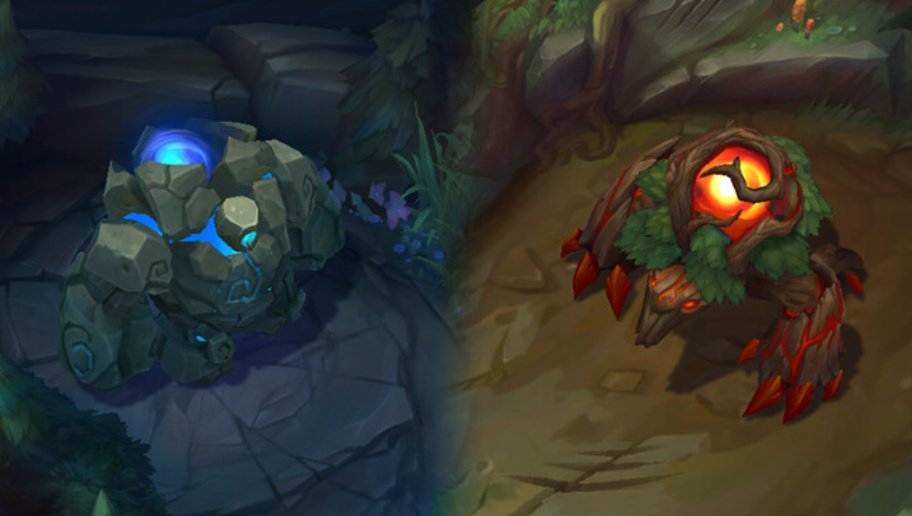
Jungling in League of Legends is one of the most dynamic and influential roles in the game. Unlike laners, junglers operate in the spaces between lanes, controlling the jungle camps, assisting teammates with ganks, and dictating the pace of the match through map control and objective securing. However, learning how to jungle effectively can be challenging for new players. This guide will break down the fundamentals of jungling, offer tips on strategy and mechanics, and help you start climbing the ranks as a jungler.
What is Jungling?
In League of Legends, the jungle refers to the area between the three lanes (top, mid, and bottom) filled with neutral monsters and various objectives. The jungler’s job is to clear these camps to gain gold and experience, support lanes by ganking enemy champions, secure objectives like Dragons and Rift Herald, and control vision with wards.
Unlike laners, who gain gold and experience primarily from minions in their assigned lanes, junglers farm neutral monsters. This unique resource gathering makes the role distinct, requiring good map awareness, decision-making, and multitasking.
Why Play Jungle?
Map Impact: Junglers can influence every lane by ganking or applying pressure, making them game-changers.
Objective Control: Junglers often lead the team in securing Dragons, Rift Heralds, and Baron Nashor.
Flexibility: Junglers can decide when and where to apply pressure rather than being locked into a lane.
Skill Growth: Playing jungle improves your overall game knowledge, from pathing and vision control to timing and team coordination.
Understanding Jungle Camps
The jungle is filled with camps, each granting experience and gold when cleared. Knowing the camps and their respawn timers is critical.
Key Jungle Camps
Blue Sentinel (Blue Buff): Grants cooldown reduction and mana regeneration. Essential for mana-hungry champions.
Red Brambleback (Red Buff): Provides a damage-over-time slow effect on attacks, crucial for ganks.
Gromp: A large frog that grants decent XP and gold.
Wolves: A small group of three monsters; good for quick clearing.
Raptors: A pack of small, fast monsters; can be tricky for some champions to clear.
Krugs: The biggest camp, offering high XP but takes time to clear.
Scuttle Crab: A neutral monster that grants vision and movement speed in a river zone. Killing this provides key vision control.
Jungle Pathing
Pathing is the order in which you clear camps. Efficient pathing maximizes experience and gold while enabling you to be ready for ganks or objective control.
Basic Jungle Pathing Concepts
Starting Buff: Typically, junglers start at either the Blue or Red Buff depending on their champion and intended gank routes.
Clear Order: After the first buff, clear nearby camps for efficient experience and gold.
Ganking: Look for opportunities to gank lanes, ideally when your lanes have crowd control or the enemy is overextended.
Reset: After a successful gank or clear, you might recall to buy items before continuing.
Objective Focus: Prioritize securing Dragons or Rift Herald when your team is ready.
Sample Early Pathing
Start at Red Buff (for aggressive gank champions).
Move to Raptors.
Clear Wolves.
Finish at Blue Buff.
Look for a gank mid or bot lane.
This path varies depending on champion and game state, so adapt accordingly.
Choosing the Right Jungler
Not all champions excel in the jungle. Some require faster clear speeds, others better ganking tools, and some are strong in late-game team fights.
Popular Jungler Types
Tank Junglers (e.g., Sejuani, Rammus): Durable and great for crowd control.
Assassin Junglers (e.g., Kha’Zix, Evelynn): High burst damage, ideal for picking off squishy targets.
Fighter Junglers (e.g., Warwick, Vi): Balanced damage and durability.
Mage Junglers (e.g., Elise, Nidalee): Powerful early game ganks with ranged poke.
Choosing a jungler that fits your playstyle and complements your team composition is essential.
Ganking: The Heart of Jungling
Ganking is the act of surprising and attacking enemy laners to create a numbers advantage.
How to Execute a Successful Gank
Assess the Lane: Look for enemies who are overextended, low on health, or without crowd control.
Choose the Approach: Decide which route gives the best element of surprise, often from behind or side bushes.
Communicate: Ping your intent so your laner can prepare to follow up.
Use Crowd Control: Time your abilities to lock down enemies.
Secure the Kill or Force Summoner Spells: Even if you don’t get a kill, making enemies use flashes or heals is a win.
Take Lane Priority: After a successful gank, help push the lane to deny the enemy farm and possibly take turret damage.
Vision Control and Map Awareness
A good jungler controls vision to keep track of enemy movements and protect their team.
Warding: Place wards near jungle entrances, river bushes, and objectives.
Clearing Wards: Use sweepers or control wards to deny enemy vision.
Tracking the Enemy Jungler: Predict and warn your team when the enemy jungler is nearby.
Vision control is a skill that separates good junglers from great ones, helping avoid ganks and set up plays.
Objectives: Dragons, Rift Herald, Baron Nashor
Junglers are the primary objective controllers. Understanding when and how to take these objectives can turn the tide of the game.
Dragons: Each dragon grants a buff to your team. Securing multiple dragons leads to the powerful Dragon Soul.
Rift Herald: Provides a powerful buff to push lanes and take turrets early.
Baron Nashor: A late-game objective that significantly boosts your team’s combat and siege potential.
Coordinate with your team to secure objectives when you have vision and positional advantage.
Itemization for Junglers
Builds vary widely based on champion and matchup, but some core ideas apply:
Jungle Item: Always start with a jungle item (such as Hailblade or Emberknife) to help with clearing and ganking.
Boots: Mobility boots for ganking junglers, or defensive boots for tankier ones.
Core Items: Build items that enhance your champion’s strengths—damage, tankiness, or utility.
Adapt your build according to the game’s flow and enemy threats.
Tips for Effective Jungling
Keep an Eye on the Minimap: Always watch for gank opportunities and enemy movements.
Don’t Over-Gank: Avoid wasting time chasing low-probability kills.
Counter-Jungle: Steal enemy camps when safe to hinder their growth.
Communicate with Your Team: Use pings and chat to coordinate plays.
Practice Efficient Clearing: Learn to minimize downtime between camps.
Be Patient: The jungle role requires experience and practice to master.
Common Mistakes to Avoid
Ignoring Objectives: Don’t focus solely on kills; objectives win games.
Poor Pathing: Inefficient routes cause you to fall behind in gold and experience.
Overextending in Ganks: Avoid risky plays that result in your death.
Neglecting Vision: Lack of wards leads to poor map control.
Not Adapting: Change your strategy based on the game’s progress.
Jungling is one of the most rewarding and challenging roles in League of Legends. It requires map awareness, mechanical skill, and strategic thinking. By mastering jungle pathing, ganking, vision control, and objective timing, you can become the backbone of your team and influence the outcome of every game.
Start with champions that suit your style, watch replays of high-level junglers, and keep practicing. Soon, you’ll find yourself confidently controlling the jungle and carrying games like a true master.



